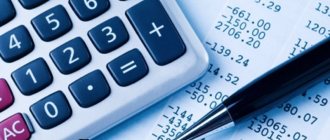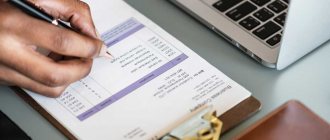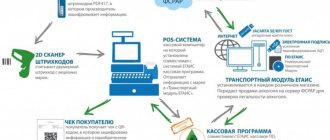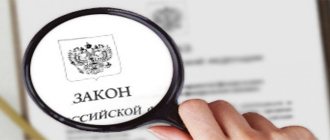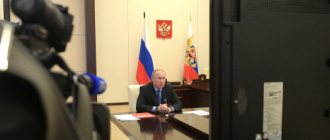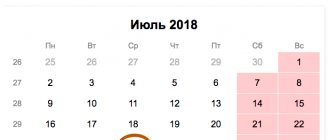It's time to take stock of the past year. It's time to approve the annual balance sheet and thereby officially recognize the activity as profitable or not. If business success depends on top managers, marketers, logisticians and other company employees, then the goal of the accounting service is to accurately maintain records of business transactions. It is the accounting data that will allow you to get an idea of the financial position at the reporting date and the financial result of all activities. Owners are probably interested in data on accounting profits in anticipation of dividends.
Helpful information
The rules for the formation of accounting information about the income of commercial organizations are established by PBU 9/99, approved by Order of the Ministry of Finance of Russia dated May 6, 1999 No. 32n. The organization's expenses are determined in accordance with PBU 10/99, approved by order of the Ministry of Finance of Russia dated May 6, 1999 No. 33n.
The main goal of any commercial organization is to make a profit. The amount of profit received during the year is an indicator of a successful business and the prospects for its further development. In addition, accounting profit determines the amount of dividends to the company's owners.
Whether an organization receives a profit or a loss depends on its financial and economic activities. The overall financial result in accounting consists of indicators for ordinary and other types of activities.
To summarize the presence and movement of financial results, accounts 84 “Retained earnings (uncovered loss)” and 99 “Profits and losses” are intended. During the year, account 99 “Profits and losses” forms the final financial result of the reporting period.
To record income and expenses for ordinary activities, synthetic account 90 “Sales” is intended. If accounting is maintained correctly on sub-accounts opened for account 90, the collapsed balance on it should be zero.
Sub-accounts can be opened for account 90 “Sales”:
- 90-1 “Revenue”;
- 90-2 “Cost of sales”;
- 90-3 “Value added tax”;
- 90-4 “Excise duties”;
- 90-5 “Export duties”;
- 90-9 “Profit / loss from sales.”
The credit of account 90 “Sales”, subaccount 90-1 “Revenue” reflects the amount of revenue from the sale of goods, products, performance of work, provision of services in correspondence with account 62 “Settlements with buyers and customers”. Please note: the amount of revenue is reflected including VAT and excise taxes.
Simultaneously with the recognition of revenue in the debit of account 90, subaccount 90-2 “Cost of sales”, the cost of goods sold, products, works, services is written off from the credit of accounts 43 “Finished products”, 41 “Goods”, 44 “Sales expenses”, 20 “ Primary production".
The debit of subaccount 90-3 “Value added tax” reflects the amounts of value added tax due for receipt from the buyer (customer) and payment to the budget in correspondence with account 68 “Calculations for taxes and fees”.
The debit of subaccount 90-4 “Excise taxes” takes into account the amounts of excise taxes included in the price of products (goods) sold.
The debit of subaccount 90-5 “Export duties” reflects the amount of export duties.
Subaccount 90-9 “Profit (loss) from sales” reflects the financial result (profit or loss) from sales for the reporting month. The balance on this subaccount can be either a credit or a debit. When making a profit from ordinary activities during the reporting period, the balance in subaccount 90-9 will be in debit. When a loss is incurred for ordinary activities, the balance is, accordingly, a credit balance.
During the year, turnover in subaccounts 90-1 “Revenue”, 90-2 “Cost of Sales”, 90-3 “Value Added Tax”, 90-4 “Excise Taxes”, 90-5 “Export Duties” are maintained cumulatively.
At the end of the month, debit turnover on subaccounts 90-2, 90-3, 90-4, 90-5 is compared with credit turnover on subaccount 90-1 “Revenue”. The difference between the indicated turnover determines the financial result from sales for the reporting month.
If the credit turnover on subaccount 90-1 exceeds the sum of debit turnover on subaccounts 90-2 “Cost of sales”, 90-3 “Value added tax” and 90-4 “Excise taxes”, 90-5 “Export duties”, then for the reporting month the organization made a profit.
Profit =
Credit balance 90-1 - (Debit balance 90-2 + Debit balance 90-3 + Debit balance 90-4 + Debit balance 90-5)
If the credit turnover on subaccount 90-1 is less than the sum of debit turnover on subaccounts 90- 2 “Cost of sales”, 90-3 “Value added tax” and 90-4 “Excise taxes”, 90-5 “Export duties”, then the organization received a loss for the reporting month.
Loss =
(Debit balance 90-2 + Debit balance 90-3 + Debit balance 90-4 + Debit balance 90-5) - Credit balance 90-1
At the end of the reporting year, all sub-accounts opened to account 90 “Sales” (except for the sub-account 90-9 “Profit (loss) from sales”), are closed with internal entries to subaccount 90-9 “Profit / loss from sales”.
Attention
The balance in subaccount 90-1 “Revenue” can only be a credit balance.
Balance on subaccounts 90-2 “Cost of sales”, 90-3 “Value added tax”, 90-4
“Excise taxes”, 90-5 “Export duties” can only be debit.
Profit or loss at the end of the year is written off with final turnover from subaccount 90-9 “Profit / loss from sales” to account 99 “Profit and loss”. That is, synthetic account 90 “Sales” is closed and has no balance at the reporting date.
The receipt of profit from ordinary activities for the reporting period is reflected by an entry in the debit of account 90-9 “Profit (loss) from sales” and in the credit of account 99 “Profits and losses”.
The loss for ordinary activities for the reporting period is reflected by an entry in the debit of account 99 “Profits and losses” and in the credit of account 90-9 “Profit / loss from sales”.
Account 91 “Other income and expenses” is intended to summarize information on other income and expenses of the reporting period.
In the credit of account 91 “Other income and expenses” the following income is reflected:
- from provision for temporary use for a fee;
- from granting for a fee rights arising from patents for inventions, industrial designs and other types of intellectual property;
- from participation in the authorized capitals of other organizations, as well as interest and other income on securities;
- from sales and other write-offs of fixed assets and other assets other than cash;
- in the form of interest from the provision of funds for use;
- fines, penalties, penalties for violation of contract terms;
- in the form of assets received free of charge;
- profit received by an organization under a simple partnership agreement.
Account 91 “Other income and expenses” is synthetic and does not have a balance at the end of the reporting period. Turnovers on sub-accounts opened to account 91 “Other income and expenses” are maintained cumulatively during the reporting year and are rolled up monthly to determine the financial results from other activities of the organization.
Sub-accounts can be opened to account 91 “Other income and expenses”:
- 91-1 “Other income”;
- 91-2 “Other expenses”;
- 91-9 “Balance of other income and expenses.”
Subaccount 91-1 “Other income” takes into account receipts of assets recognized as other income.
Subaccount 91-2 “Other expenses” takes into account other expenses.
At the end of the month, the debit turnover on subaccounts 91-2 is compared with the credit turnover on subaccount 91-1. The difference between the indicated turnover determines the financial result from other activities for the reporting month.
If the credit turnover in subaccount 91-1 exceeds the amount of debit turnover in subaccount 91-2 “Other expenses,” then the organization made a profit for the reporting month.
Profit = Credit
balance 91-1 - Debit balance 91-2
Loss = Debit balance 91-2 - Credit balance 91-1
Profit or loss from other activities is written off on a monthly final basis from subaccount 91-9 “Profit (loss) from sales” to account 99 “Profits and losses”. That is, synthetic account 91 “Sales” is closed and has no balance at the reporting date.
The receipt of profit from other types of activities for the reporting period is reflected by an entry in the debit of account 91-9 “Profit (loss) from sales” and in the credit of account 99 “Profits and losses”.
Loss on other types of activities for the reporting period is reflected by an entry in the debit of account 99 “Profits and losses” and in the credit of account 91-9 “Profit / loss from sales”.
At the end of the reporting year, all subaccounts opened to account 91 “Other income and expenses” are closed with internal entries to subaccount 91-9 “Balance of other income and expenses”.
Example 1
Let's look at the closing of financial results for 2011.
In 2011, revenue from sales of Variant LLC’s own finished products amounted to RUB 2,360,000, including 18% VAT – RUB 360,000. The cost of finished products sold was 800,000 rubles, general business expenses and selling expenses were 100,000 rubles. Other income was received in the amount of 300,000 rubles, other expenses amounted to 330,000 rubles.
Synthetic account 90 “Sales”
DEBIT 90-1 CREDIT 90-9
– 2,360,000 rub. – closing the credit balance of the subaccount for revenue accounting;
DEBIT 90-9 CREDIT 90-2
– 900,000 rub. (RUB 800,000 + RUB 100,000) – closing the debit balance of subaccounts for accounting for cost of sales;
DEBIT 90-9 CREDIT 90-3
– 360,000 rub. – closing the debit balance of subaccounts for VAT accounting;
DEBIT 90 -9 CREDIT 99
– 100,000 rub. – profit from sales is reflected.
Synthetic account 91 “Other income and expenses”
DEBIT 91-1 CREDIT 91-9
– 300,000 rub. – closing the credit balance of the subaccount for accounting for other income;
DEBIT 91 -9 CREDIT 91-2
– 330,000 rub. – closing the debit balance of the subaccount for accounting for other expenses;
DEBIT 99 CREDIT 91-9
– 30,000 rub. – loss from other activities of the organization is reflected.
In the table, the debit balance in account 90-9 “Profit/loss from sales” means that at the end of 2011, Variant LLC received a profit from its main activity in the amount of 100,000 rubles. (2,360,000 – 360,000 – 800,000 – 100,000).
Table. Balances on accounts 90 “Sales” and 91 “Other income and expenses” as of December 31, 2011
The balance of other income and expenses is credit, that is, a loss in the amount of 30,000 rubles was received from other activities. (330,000 – 300,000).
The balance at the end of each month on these accounts is always zero.
However, the balances in the subaccounts of accounts 90 “Sales” and 91 “Other income and expenses” accumulate during the reporting year.
When reforming the balance sheet as of December 31 of the reporting year, the balances in the subaccounts of accounts 90 “Sales” and 91 “Other income and expenses” are minimized.
Balance Reformation
So, the final financial result of the organization’s activities for the reporting year is reflected in account 99 “Profits and losses”.
Credit turnover on account 99 means that the organization has made a profit, debit turnover on account 99 indicates a loss. By comparing debit and credit turnover, the financial result of the reporting period is determined. The credit balance at the end of the reporting year is the amount of net profit according to accounting data, the debit balance, respectively, the loss.
Account 99 is closed at the end of the reporting year with the final entry in December. Closing account 99 is called balance sheet reformation.
When reforming the balance sheet, the amount of net profit of the reporting year is written off from account 99 to the credit of account 84, subaccount “Retained profit of the reporting year” (posting Debit 84 Credit 99), the amount of net loss is written off to the debit of account a 84, subaccount “Uncovered loss of the reporting year” ( posting Debit 99 Credit 84).
The balance of account 84 is reflected in the balance sheet as the final financial result for the reporting period minus taxes and other similar mandatory payments due from profits established in accordance with the legislation of the Russian Federation, including sanctions for non-compliance with tax rules.
Example 2
Let's use the conditions of example 1.
In the example under consideration, Variant LLC received a profit from its main activity in the amount of 100,000 rubles. and loss from other activities in the amount of RUB 30,000. The receipt of profit is reflected in the credit of account 99, the receipt of loss - in the debit of account 99. Thus, the balance at the end of the year on this account is in credit and will amount to 70,000 rubles. (100,000 – 30,000).
The balance sheet reform is reflected in this case by posting:
DEBIT 99 CREDIT 84
– 70,000 rub. – balance reformation.
The specified amount is shown in the Balance Sheet on line 1370 “Retained earnings (uncovered loss).”
The balance in subaccount 91-1 “Other income” can only be a credit balance. The balance in subaccount 91-2 “Other expenses” can only be a debit balance.
Attention
If the organization receives a loss, then its amount is shown in parentheses in the Balance Sheet.
If at the beginning of the reporting period the organization does not have retained earnings (uncovered loss) from previous years and during the reporting period no interim dividends were distributed or fixed assets previously overvalued were not disposed of, then the value of line 1370 “Retained earnings (uncovered loss)” as of the reporting date should equal to the value of line 2400 “Net profit (loss) of the reporting period” of the Profit and Loss Statement. This conclusion was made based on the norms
Instructions for the application of the Chart of Accounts, paragraphs 79, 83 of the Regulations on accounting and financial reporting, paragraphs 1, 2 of Article 42 of the Law of December 26, 1995 No. 208-FZ, paragraph 1 of Article 28 of the Law of February 8, 1998 No. 14 -FZ.
A.S. Yukhnevich-Leliva, tax consultant
Accounting account 90 is an active-passive “Sales” account, used to reflect information related to the sale of finished products for the main activity of the enterprise. The account is one of the most difficult in terms of accounts. Its peculiarity is that at the end of the period it must be closed without any balance. Using standard postings and practical examples for dummies, we will understand the specifics of using account 90 and consider closing account 90 at the end of the month and at the end of the year.
The financial result from sales from the main activity is reflected on the account monthly. During the year, the account accumulates the financial result of the enterprise's main activities.
The movement pattern for the analytical subaccounts of account 90 is reflected in the table:
The main activity of the enterprise can be:
- sale of finished products and semi-finished products (own production);
- services of a non-productive or production nature;
- sale of purchased goods;
- construction, installation, research, geological exploration, etc.;
- rent;
- transport services;
- transportation of passengers;
- other.
Subaccounts of account 90
Closing a synthetic account is provided at the expense of your own analytical accounts. Some of them are active, some are passive. The difference between the active and passive balance is closed to account 90.09.
Sub-accounts can be opened for account 90:
- 90.1 - “Revenue”. The revenue subaccount reflects the amount of proceeds from sales. This is a passive subaccount;
- 90.2 - “Cost of sales”. Active subaccount reflects the cost of goods sold;
- 90.3 - “VAT on sales”. The VAT account is also active, in correspondence with account 68 it reflects the amount of VAT accrued to the budget;
- 90.4 - “Excise taxes”. The active excise subaccount reflects excise taxes included in the amount of goods sold;
- 90.9 - “Profit (loss) from sales.” The subaccount acts as a regulator; all other subaccounts are closed to it.
Typical correspondence for account 90:
Get 267 video lessons on 1C for free:
Closing 90 accounts, postings
At the end of the month, the sales result is formed in subaccount 90.9. It happens like this:
- The balance is calculated for each subaccount.
- The total turnover for all subaccounts (debit and credit) is calculated, and the credit turnover is subtracted from the debit turnover. A positive balance means a loss, a negative balance means a profit.
- The financial result is reflected using account 90.9 and written off to account 99, in accordance with the accounting rules. Profit is reflected by posting Dt 90.9 - Kt 99.1, loss - Dt 99.1, Kt 90.9.
Thus, at the end of the month, each subaccount 90 has a balance, but there should be no balance on the synthetic account.
At the end of the year, each subaccount of account 90.x is closed to 90.9. Debit subaccounts are closed by posting Dt 90.9 - Kt 90.x, credit - Dt 90.x - Kt 90.9.
As a result, the balance of account 90 at the end of the year will be reset to zero. This process is part of the balance sheet reform carried out at the end of each year.
With the beginning of the new year, the account will be opened again, from scratch.
Rigid planning and management: what does the result depend on?
Profit and profitability indicators play an extremely important role in the system for assessing the performance, business qualities of an enterprise and the degree of its reliability. Profit accumulates all income and expenses and summarizes the results of the enterprise’s activities.
Analysis of the financial results (profit) of the enterprise is as follows:
- determining deviations of each indicator for the current analyzed period;
- study of the structure of relevant indicators and their changes;
- conducting factor analysis of profit and profitability.
Let us conduct a detailed analysis of profit and profitability using the example of OJSC “X”. For the analysis, we will use the Balance Sheet (F1) and the Profit and Loss Statement (F2) for 2011 (these forms are presented in Appendices 1, 2).
First we find the following indicators:
- absolute profit deviation (∆P):
∆P = P1 – P0,
where P1, P0 - the value of profit in the reporting and base year, respectively, thousand rubles;
- growth (decrease) rate (T):
T = P1 / P0 × 100%;
- the level of each indicator (Ui) to revenue (B) from the sale of goods, products, works, services:
Уi = Пi / Вi × 100%,
where i = 0 is the base period;
i = 1 — reporting period;
change in structure (∆Y):
∆Y = Y1 – Y0,
where Y1, Y0 are the level of the reporting and base periods, respectively.
All calculations are presented in table. 1.
| Table 1. Analysis of the profit of the enterprise OJSC “X” for 2010–2011. | |||||||||
| No. | Index | Line code | 2010 | 2011 | Absolute deviation (+/–) | Growth (decrease) rate, % | Level to revenue in the base period, % | Level to revenue in the reporting period, % | Level deviation (+/–) |
| 1 | 2 | 3 | 4 | 5 | 6 = 5 – 4 | 7 = 5 / 4 × 100 | 8 | 9 | 10 = 9 – 8 |
| 1 | Revenue (net) from the sale of goods, products, works, services (less VAT, excise taxes and similar mandatory payments) | 2110 | 245 900 | 345 897 | 99 997 | 140,7 | 100,0 | 100,0 | — |
| 2 | Cost of sales of goods, products, works, services | 2120 | 190 234 | 178 345 | –11 889 | 93,8 | 77,4 | 51,6 | –25,8 |
| 3 | Gross profit | 2100 | 55 666 | 167 552 | 111 886 | 301,0 | 22,6 | 48,4 | 25,8 |
| 4 | Business expenses | 2210 | |||||||
| 5 | Administrative expenses | 2220 | 89 123 | 89 123 | — | 25,8 | 25,8 | ||
| 6 | Profit (loss) from sales | 2200 | 55 666 | 78 429 | 22 763 | 140,9 | 22,6 | 22,7 | 0,1 |
| 7 | Income from participation in other organizations | 2310 | — | — | |||||
| 8 | Interest receivable | 2320 | — | — | |||||
| 9 | Percentage to be paid | 2330 | — | — | |||||
| 10 | Other income | 2340 | 337 | 2745 | 2408 | 814,5 | 0,1 | 0,8 | 0,7 |
| 11 | other expenses | 2350 | 5500 | 16 100 | 10 600 | 292,7 | 2,2 | 4,7 | 2,5 |
| 12 | Profit (loss) before tax | 2300 | 50 503 | 65 074 | 14 571 | 128,9 | 20,5 | 18,8 | –1,7 |
| 13 | Current income tax | 2410 | 12 625 | 16 268 | 3643 | 128,9 | 5,1 | 4,7 | –0,4 |
| 14 | Including ongoing tax obligations | 2421 | 2800 | 2800 | — | 0,0 | 0,8 | 0,8 | |
| 15 | Change in deferred tax liabilities | 2430 | 4 | 14 | 10 | 350,0 | 0,002 | 0,004 | 0,002 |
| 16 | Change in tax assets | 2450 | — | ||||||
| 17 | Other | 2460 | — | ||||||
| 18 | Net profit | 2400 | 37 874 | 48 792 | 10 918 | 128,8 | 15,4 | 14,1 | –1,3 |
According to table. 1 in 2011, net profit increased by 28.8% compared to 2010, which amounted to 10,918 thousand rubles. However, the profit level relative to revenue decreased by 1.3%.
Thus, based on the data in table. 1 we can draw the following conclusions:
- an increase in the indicator on page 1 indicates that the organization receives more income from its core activities;
- a decrease in the indicator on page 2 is a positive trend if the relative reduction in production costs of sold products does not affect their quality;
- the growth of the indicator on page 6 is favorable. This indicator indicates an increase in product profitability and a relative decrease in production and distribution costs;
- the growth of indicators on pages 12, 18 also indicates positive trends in the organization of production at this enterprise. Different rates of change in these indicators may be caused mainly by adjustments to the tax system;
- the indicator on page 13 characterizes the share of profit transferred to the budget in the form of income tax. The growth of this indicator in dynamics, which usually occurs with an increase in tax rates, is generally undesirable, but a necessary phenomenon that does not depend on the enterprise.
When analyzing profits, an important role is played by the analysis of the influence of factors (factor analysis), which is a technique for a comprehensive and systematic study and measurement of the impact of factors on the value of the performance indicator. Let us note the main types of factor analysis :
- deterministic (functional) - the effective indicator is presented in the form of a product, quotient or algebraic sum of factors;
- stochastic (correlation) - the relationship between performance and factor indicators is incomplete or probabilistic;
- direct (deductive) - from the general to the specific;
- reverse (inductive) - from the particular to the general;
- single-stage and multi-stage;
- static and dynamic;
- retrospective and prospective.
It should be noted that any factor analysis consists of the following stages :
1. Selection of factors.
2. Classification and systematization of factors.
3. Modeling the relationships between performance and factor indicators.
4. Calculation of the influence of factors and assessment of the role of each of them in changing the value of the effective indicator.
5. Practical use of the factor model (calculation of reserves for growth of the effective indicator).
It is well known that changes in profit from product sales are due to changes in the following factors:
- sales volume;
- implementation structures;
- selling prices for sold products;
- prices for raw materials, supplies, fuel, energy and transportation tariffs;
- level of costs of material and labor resources.
Calculation of the influence of the listed factors on the profit of OJSC “X” is presented in table. 2–4.
| Table 2. Initial data for factor analysis of profit from sales of products of the enterprise JSC "X" | |||||
| No. | Index | 2011 | 2010 | ||
| symbol | thousand roubles. | symbol | thousand roubles. | ||
| 1 | Number of products (goods) sold, pcs. | q1 | 69 | q0 | 60 |
| 2 | Product price, thousand rubles. | p1 | 5013 | p0 | 4098,3 |
| 3 | Revenue from sales of products (goods), thousand rubles. | IN 1 | 345 897 | B0 | 245 900 |
| 4 | Total cost of product sales (line 2120 + line 2210 + line 2220 F2), thousand rubles. | S1 | 267 468 | S0 | 190 234 |
| 5 | Cost of 1 unit. products, thousand rubles/pcs. | Sed. 1 | 3876,35 | Sed. 0 | 3170,57 |
| 6 | Profit from sales of products (line 2200 F2), thousand rubles. | P1 | 78 429 | P0 | 55 666 |
| Table 3. Performance indicators of JSC “X” for 2011 in comparable prices | ||||||||
| No. | Index | 2010 | 2011 at comparable prices | 2011 | ||||
| symbol | thousand roubles. | symbol | calculation formula | thousand roubles. | symbol | thousand roubles. | ||
| 1 | Revenue from sales of products (goods), thousand rubles. | B0 | 245 900 | IN | q1 × p0 | 282 785 | IN 1 | 345 897 |
| 2 | Total cost, thousand rubles. | S0 | 190 234 | Sʹ | 218 769 | S1 | 267 468 | |
| 3 | Profit from sales of commercial products, thousand rubles. | P0 | 55 666 | P | 64 015,9 | P1 | 78 429 | |
| Table 4. Calculation of factor influences on profit from product sales | |||
| Factor | Calculation formula | Value of the indicator, thousand rubles. | Specific gravity, % |
| Changes in selling prices for products | ∆pР1 = В1 – Вʹ | 63 112,0 | 277,3 |
| Change in production volume | ∆p2 = p0 × (Sʹ / S0) – p0 | 8349,9 | 36,7 |
| Change in product mix | ∆p3 = p0 × ((Bʹ / B0) – (Sʹ / S0)) | 0,0000 | 0,0000 |
| Impact on profit of savings from reductions in product costs | ∆p4 = Sʹ – S1 | –48 698,9 | –213,9 |
| Change in cost due to structural changes in product composition | ∆pP5 = S0 × (Вʹ / В0) – Sʹ | 0,0 | 0,0 |
| Cumulative influence of factors | 22 763 | 100 | |
According to table. 4 method for calculating the influence of factors on profit from product sales consists in sequentially calculating the influence of each factor:
1. Calculation of the total change in profit (ΔP) from product sales:
ΔP = P1 – P0.
2. Calculation of the impact on profit of changes in selling prices for sold products (Δp1):
∆p1 = В1 – Вʹ = q1 × p1 – q1 × p0,
where B1 = q1 × p1 - revenue from sales of products in the reporting period;
Вʹ = q1 × p0 - revenue from sales of products at comparable prices.
3. Calculation of the impact on profit of changes in production volume (Δp2):
Δp2 = P0 × (Sʹ/ S0) – p0,
where Sʹ is the total cost in the reporting period in comparable prices;
S0 is the total cost of the base year.
4. Calculation of the impact on profit of changes in the structure of product sales (Δp3):
Δp3 = П0 × ((Вʹ / В0) – (Sʹ / S0)).
5. Calculation of the impact on profit of changes in total cost (Δp4):
Δp4 = Sʹ– S1,
where S1 is the total cost of products sold in the reporting period.
6. Calculation of the impact on profit of changes in cost due to structural changes in the composition of products (Δp5):
∆p5 = S0 × (Bʹ / B0) – Sʹ.
After this, you can calculate the total impact of factors affecting the profit from sales of products and, consequently, the profit of the reporting period using the following formula:
∆p = P1 – P0 = ∆p1 + ∆p2 + ∆p3 + ∆p4 + ∆p5.
Let's do the calculations for our example:
∆P = 78,429 – 55,666 = 22,763 thousand rubles.
∆p1 = 69 × 5013 – 69 × 4098.3 = 63,112 thousand rubles.
Thus, the increase in product prices in the reporting period compared to the previous period by an average of 22% (p1 / p0 = 5013 / 4098.3 × 100% = 122%) led to an increase in the amount of profit from product sales by 63,112 thousand. rub.
∆p2 = 55,666 × (218,769 / 190,234) – 55,666 = 8349.9 thousand rubles.
∆p3 = 55,666 × (282,785 / 245,900 – 218,769 / 190,234) = 0.
∆p4 = 218,769 – 267,468 = –48,698.9 thousand rubles.
∆p5 = 190,234 × (282,785 / 245,900) – 218,769 = 0.
∆p = 63,112 + 8349.9 + 0 + (–48,698.9) + 0 = 22,763 thousand rubles.
Now, using the data from the Profit and Loss Statement, we will conduct a factor analysis of return on sales and net profitability.
Note that to analyze return on sales (R), you can use the following factor model:
where P is profit from sales of products;
B - revenue from sales of products;
S—full cost.
In this case, the influence of the factor of price changes on products is determined by the formula:
ΔRВ = (В1 – S0) / В1 – (В0 – S0) / В0.
Accordingly, the influence of the cost change factor will be:
ΔRS = (B1 – S1) / B1 – (B1 – S0) / B1.
The sum of factor deviations will give the total change in profitability for the period:
ΔR = ΔRВ + ΔRS.
Using the data from table. 2, 3 and formulas, we will conduct a factor analysis of the profitability of the enterprise OJSC “X”.
| Table 5. Initial data for factor analysis of profitability of sales of the enterprise OJSC "X" | ||||||||||
| Price, thousand rubles | Number of products (goods) sold, pcs. | Sales volume, thousand rubles. | Cost, thousand rubles. | |||||||
| in the base year | in the reporting year at prices of the base year | in the reporting year | base year | actual in prices of the base period | reporting period | |||||
| Manufactured products | P0 | p1 | q0 | q1 | B0 | IN | IN 1 | S0 | S2 | S1 |
| 4098,3 | 5013 | 60 | 69 | 245 900 | 282 785 | 345 897 | 190 234 | 218 769 | 267 468 | |
| Table 6. Factor analysis of profitability of sales | |||||
| Product profitability, % | Change in profitability, % | Change in profitability due to factors, % | |||
| base year | reporting year | price change | change in cost | ||
| R0 | R1 | ∆RВ | ∆RS | ||
| Manufactured products | 22,64 | 22,67 | 0,04 | 22,37 | –22,33 |
According to table. 6, the profitability of sales for the reporting period increased compared to the profitability of the previous period by 0.04%. This increase occurred under the influence of increased prices for manufactured products (22.37%).
In the process of profitability analysis, the profitability of all capital, equity, and permanent funds should be assessed. For example, return on assets (economic profitability) is a general indicator showing how much profit is generated per 1 ruble. property. The size of dividends on shares in joint stock companies depends on the value of this coefficient.
Profitability ratios can be calculated not only for the entire volume of enterprise funds, but also for certain types of resources (in particular, fixed assets). The necessary information for assessing the economic efficiency of using fixed assets is contained in financial statements.
In domestic analytical practice, the coefficient of profitability of (core) activities (Net Profit Margin, NPM) is most often used, calculated as the ratio of profit from sales (P) to the costs of production of sold products, which consist of the cost of sales of goods, products, works and services ( C), commercial (CR) and management expenses (UR), that is, according to the formula:
In table 7 provides a systematic list of profitability ratios.
| Table 7. Indicators characterizing profitability | ||||
| Index | Calculation method | Data | Explanations | |
| 2010 | 2011 | |||
| Return on sales (profit margin) | (p. 2200 F2 × 100%) / (p. 2110 F2) | 22,64 % | 22,67 % | Shows how much profit is per unit of product sold |
| Overall profitability of the reporting period | (p. 2300 F2 × 100%) / (p. 2110 F2) | 20,54 % | 18,81 % | |
| Return on equity | (p. 2300 F2 × 100%) / (p. 1300 F1) | 32,02 % | 34,04 % | Shows the efficiency of using equity capital |
| Return on assets (economic profitability) | (p. 2300 F2 × 100%) / (p. 1600 F1) | 30,10 % | 31,50 % | Shows the efficiency of using all the organization’s assets |
| Equity return | (p. 2300 F2 × 100%) / (p. 1100 F1) | 409,69 % | 413,80 % | Shows the efficiency of using fixed assets and other non-current assets |
| Profitability of core activities | (line 2200 F2 × 100%) / (line 2120 + 2210 + 2220 F2) | 29,26 % | 29,32 % | Shows how much profit from sales falls on 1 ruble. costs |
| Profitability of permanent capital | (page 2300 F2 × 100%) / page (1300 + 1400) F1 | 32,00 % | 34,87 % | Shows the efficiency of using capital invested in the organization’s activities for a long period of time |
| Payback period of equity capital | (p. 1300 F1) / (p. 2300 F2) | 3,12 | 2,87 | Shows the number of years during which the investment in this organization will fully pay off |
A well-conducted analysis of the financial results of an enterprise will improve the validity of planning and the rigidity of management standards, assess the reliability of accounting and the efficiency of control, and will also help ensure the efficient and uninterrupted organization of activities.
Annex 1
| JSC "X" BALANCE SHEET as of 12/31/2011 | ||||||
| Index | Code | Old code | 2009 | 2010 | 2011 | |
| 1 | 2 | 3 | 4 | 5 | 6 | |
| Assets | ||||||
| I. Non-current assets | ||||||
| Intangible assets | 1110 | 110 | ||||
| Research and development results | 1120 | |||||
| Fixed assets | 1130 | 120 | 8860 | 10 100 | 15 720 | |
| Profitable investments in material assets | 1140 | 135 | ||||
| Financial investments | 1150 | 140 | 2 | 2 | 2 | |
| Deferred tax assets | 1160 | 145 | 4 | 4 | 4 | |
| Other noncurrent assets | 1170 | 150 | 2221 | 2221 | 0 | |
| Total for Section I | 1100 | 190 | 11 087 | 12 327 | 15 726 | |
| II. Current assets | ||||||
| Reserves | 1210 | 210 | 67 871 | 75 094 | 87 552 | |
| VAT on purchased assets | 1220 | 220 | 280 | 25 | 2964 | |
| Accounts receivable | 1230 | |||||
| Including: | ||||||
| accounts receivable for which payments are expected more than 12 months after the reporting date | 1231 | 230 | ||||
| accounts receivable for which payments are expected within 12 months after the reporting date | 1232 | 240 | 25 123 | 60 123 | 56 213 | |
| financial investments | 1240 | 250 | ||||
| Cash and cash equivalents | 1250 | 260 | 32 087 | 21 478 | 37 659 | |
| Other current assets | 1260 | 270 | 2195 | 938 | 608 | |
| Total for Section II | 1200 | 290 | 127 556 | 157 658 | 184 996 | |
| Balance | 1600 | 300 | 138 643 | 169 985 | 200 722 | |
| Passive | ||||||
| III. Capital and reserves | ||||||
| Authorized capital (share capital, authorized capital) | 1310 | 410 | 3 | 3 | 3 | |
| Own shares purchased from shareholders | 1320 | 411 | ||||
| Revaluation of non-current assets | 1340 | |||||
| Additional capital (without revaluation) | 1350 | 420 | 6631 | 6631 | 6631 | |
| Reserve capital | 1360 | 430 | ||||
| Retained earnings (uncovered loss) | 1370 | 470 | 121 223 | 151 100 | 179 856 | |
| Total for Section III | 1300 | 490 | 127 857 | 157 734 | 186 490 | |
| IV. long term duties | ||||||
| Borrowed funds | 1410 | 510 | ||||
| Deferred tax liabilities | 1420 | 515 | 92 | 95 | 109 | |
| Estimated liabilities | 1430 | |||||
| Other obligations | 1450 | 520 | ||||
| Total for Section IV | 1400 | 590 | 92 | 95 | 109 | |
| V. Current liabilities | ||||||
| Borrowed funds | 1510 | 610 | ||||
| Accounts payable | 1520 | 620 | 10 694 | 12 156 | 14 123 | |
| revenue of the future periods | 1530 | 640 | ||||
| Estimated liabilities | 1540 | |||||
| Other obligations | 1550 | 660 | ||||
| Total for Section V | 1500 | 10 694 | 12 156 | 14 123 | ||
| Balance | 1700 | 138 643 | 169 985 | 200 722 | ||
Appendix 2
| GAINS AND LOSSES REPORT | |||
| Index | Line code | 2010 | 2011 |
| 1 | 2 | 3 | 4 |
| Revenue (net) from the sale of goods, products, works, services (less VAT, excise taxes and similar mandatory payments) | 2110 | 245 900 | 345 897 |
| Cost of sales of goods, products, works, services | 2120 | 190 234 | 178 345 |
| Gross profit | 2100 | 55 666 | 167 552 |
| Business expenses | 2210 | ||
| Administrative expenses | 2220 | 89 123 | |
| Profit (loss) from sales | 2200 | 55 666 | 78 429 |
| Income from participation in other organizations | 2310 | ||
| Interest receivable | 2320 | ||
| Percentage to be paid | 2330 | ||
| Other income | 2340 | 337 | 2745 |
| other expenses | 2350 | 5500 | 16 100 |
| Profit (loss) before tax | 2300 | 50 503 | 65 074 |
| Current income tax | 2410 | 12 625 | 16 268 |
| Including ongoing tax obligations | 2421 | 2800 | |
| Change in deferred tax liabilities | 2430 | 4 | 14 |
| Change in tax assets | 2450 | ||
| Other | 2460 | ||
| Net profit | 2400 | 37 874 | 48 792 |
Debit 99 is profit or loss
Every month, synthetic accounts 90 “Sales” and 91 “Other income and expenses” are closed (“reset to zero”). This is due to the fact that the excess debit or credit turnover of these accounts is assigned to account 99.
Let us demonstrate this using the example of counting 90.
During the month, goods were sold in the amount of 118,000 rubles, incl. VAT 18%. Cost of sales is 85,000 rubles. There were no other transactions on account 90.
Despite the fact that the sub-accounts to account 90 continue to accumulate turnover throughout the year (they are closed only on December 31), the synthetic account 90 itself must be closed at the end of each month. To do this, credit and debit turnovers are compared on the last day of each month:
In order for account 90 to be closed at the end of the month, you need to debit it for 15,000 rubles:
Thus, account 90 was closed:
If at the end of the month the debit turnover of account 90 turns out to be greater than the credit turnover, then a loss occurs, which is reflected by the reverse entry: Debit 99 - Credit 90.
Similarly, profit and loss are identified for other types of activities, income and expenses from which are recorded in account 91:
Debit 91 - Credit 99 means that profit was generated for other activities at the end of the month.
Debit 99 - Credit 91 means that there was a loss for other income and expenses for the month.
Other, not operational: we expand on the concept
The concept of “operating income and expenses” was previously contained in the edition of PBU 9/99 (10/99), which was in force before the preparation of financial statements for 2006. Before the adoption of Order of the Ministry of Finance No. 116n dated September 18, 2006, which simplified the classification of the objects in question, all income and expenses whose occurrence was not associated with ordinary activities were divided into the following types: non-operating; operating rooms; emergency.
Moreover, even before the adoption of the Order in question they were called “others”, after which they ceased to be divided into several types. Today they are all recognized as simply others.
Despite this, although the law does not deny the possibility of organizations using the previous classification of other income and expenses for accounting (management, control) purposes, they must still be taken into account in account 91 “Other income and expenses.”
For grouping, the organization has the right to use the composition of non-operating, operating and emergency income that was provided for by the PBU as amended before the adoption of the Ministry of Finance order.
Account 99 - for income tax calculations
During the year, account 99 also reflects the amounts of accrued, permanent tax liabilities and assets and payments for recalculation of this tax from actual profit, as well as the amount of tax sanctions due for payment. Thus, the accrual of a conditional income tax expense in accordance with PBU 18/02, as well as simply income tax on the basis of a declaration, if accounting for calculations in accordance with PBU 18/02 is not kept, will look like this: Debit 99 - Credit 68. Same The entry will reflect the accrual of fines and penalties to the budget for income tax, VAT and other taxes.
Sanctions to extra-budgetary funds (for example, the Pension Fund of Russia) should be calculated as follows: Debit 99 - Credit 69 “Calculations for social insurance and security”.
If accounting for profit calculations is carried out in accordance with PBU 18/02, then debit account 99 can also correspond, in particular, with account 09 “Deferred tax assets”. Thus, accounting entry D99 K09 is made when writing off a deferred tax asset in the event of disposal of the object for which it was accrued.
Closing account 99
At the end of the year, account 99 is reset to zero with the difference assigned to account 84 “Retained earnings (uncovered loss)”: the so-called “balance sheet reformation” occurs. At the end of the year, the posting of Debit 99 - Credit 84 means that the identified final profit at the end of the year for all types of activities is included in the profits (losses) of previous years. And the loss at the end of the year is reflected: Debit 84 - Credit 99.
Thus, the answer to the question “Profit on the debit or credit of account 99” is as follows: during the year, the balance on account 99 in credit means a profit, and on the debit - a loss. Accordingly, debiting account 99 during the year means recognizing a monthly loss (as well as charging income tax and sanctions), and crediting means profit. Consequently, crediting account 99 at the end of the year when reforming the balance sheet means that the year ended with a loss, and debiting (Debit account 99 - Credit account 84) means that at the end of the year a profit was made.


